I’m obsessed with novelty infomercial products — the kind relentlessly shilled by the likes of Billy Mays and the original Skymall catalog before it went bust. There’s something fascinating about multipurpose gadgets that fix some niche problem that doesn’t need fixing or do the work of three disparate products whose functions have no relation to one another. (Portable DVD player garlic press karaoke machine, anyone?) The Selk’bag Nomad isn’t one of those products. But, it’s easy to mistake it for one. I did.
After all, does anyone really need a wearable sleeping bag? The OG sleeping bag design has worked for decades, if not centuries, hasn’t it? Still, with the right ingenuity, almost anything can be improved. So, I accepted Selk’bag’s invitation to field test its flagship Selk’bag Nomad to see what all the fuss is about. It promised to be everything a sleeping bag is and so much more. After a week of camping with it in Oklahoma, I found myself liking it a lot more than I expected. Here’s why.
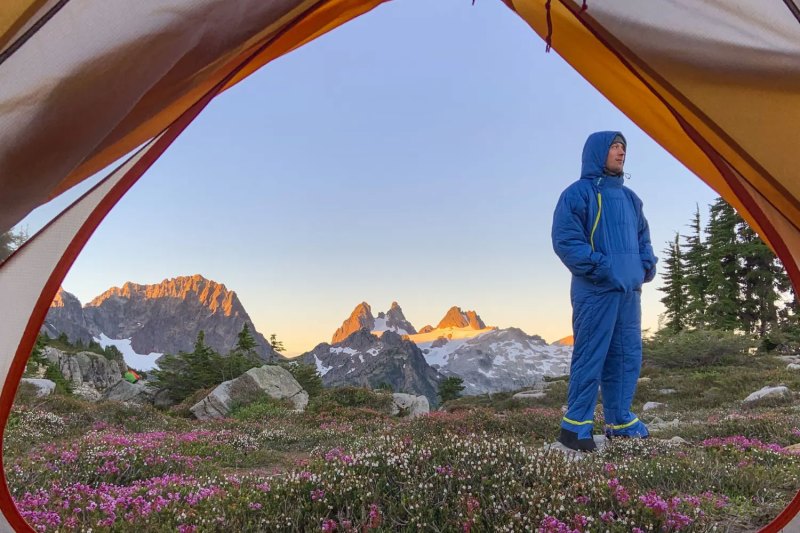
What Is the Selk’bag Nomad?
The Selk’bag Nomad is a “sleeping bag suit,” a wearable sleeping bag designed to do everything an ordinary sleeping bag does — namely, keep campers warm and insulated while sleeping. Because it’s wearable, it can also be kept on while cooking, relaxing around the campfire, and even hiking if you’re so inclined (assuming you wear your own boots). In theory, the variety of zippers, pockets, hand coverings, removable booties, and a hood make it much more useful than a traditional sleeping bag. The Selk’bag Nomad is the brand’s flagship product with the highest quality materials and every feature the company offers in one wearable sleeping bag.
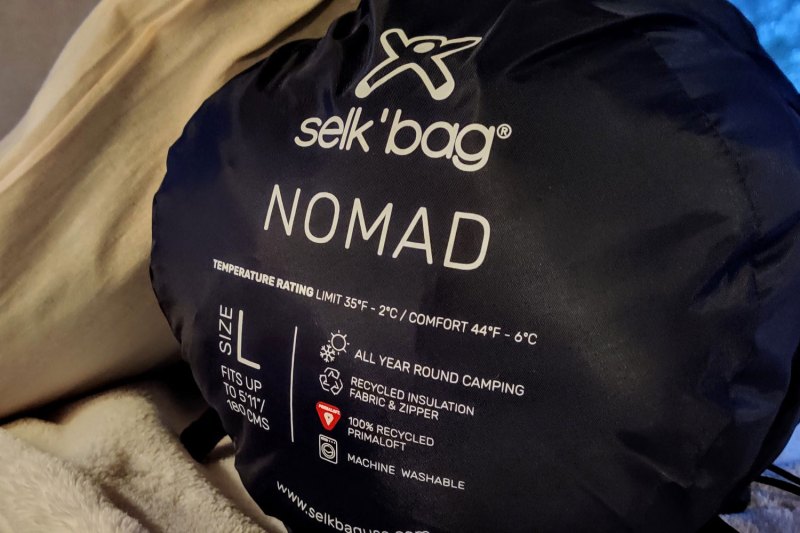
How Does the Selk’bag Nomad Work?
Not surprisingly, the Selk’bag Nomad is a simple product without any “setup” required. Because it’s a wearable sleeping bag with a head hole, two arms, and two legs, it goes on and off just like a typical onesie for babies. The first time I took it out of the included stuff sack, I unzipped the side zipper from the neckline down to the waist, then stepped in, putting my hands and feet where they’re designed to go. The attached hood cinched over my head like a standard hoodie. Voilà!
Although the overall purpose is the same, it works differently than a traditional sleeping bag. Because each of your limbs is isolated in its own fabric tube, it feels warmer. Technically, it’s not, but it feels that way. Consider how a glove (with fingers separated) keeps your fingers warm differently than a mitten (fingers together). The ability to walk around while wearing your sleeping bag without having to doff and don it at your campsite makes the Selk’bag Nomad infinitely more versatile too.
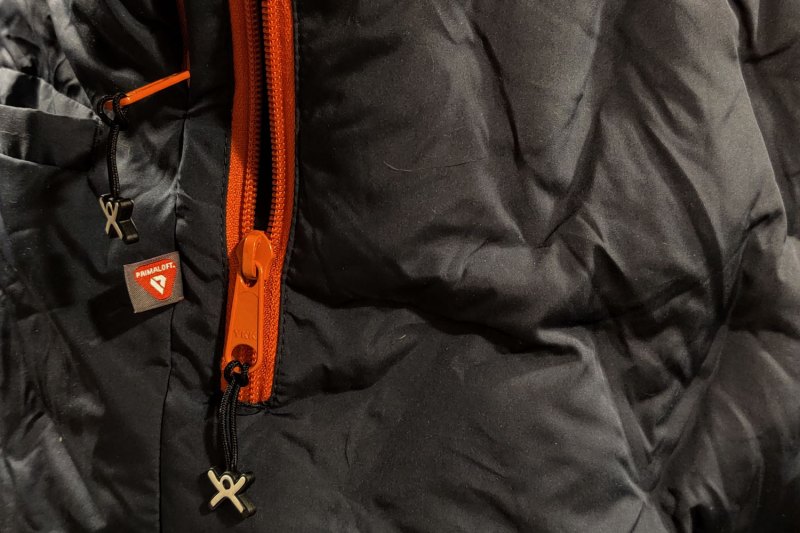
What Are the Features of the Selk’bag Nomad?
The Selk’bag Nomad has many of the same features of a premium sleeping bag, including:
- Primaloft insulation: The synthetic insulation consists of tiny fabric clusters similar to down to maximize insulation and warmth.
- Adjustable hood: The attached insulated hood offers additional warmth in the coldest weather.
- Multiple pockets: Two kangaroo-style pockets work to keep hands warm and to stash a smartphone, beanie, or pair of gloves. An open cargo pocket provides extra storage.
- Elastic hand closures and booties: When you’re ready for bed (or need extra warmth outside), the hand closures wrap around your hands and snug in place with elastic bands. The zip-off booties also allow for easy removal, so you can wear your own shoes or hiking boots outside.
- Made from recycled material: Every part of the Selk’bag Nomad, including the fabrics, insulation, and zippers, is made from 140-plastic-bottles worth of 100% post-consumer recycled material.
- Compression stuff sack: The Selk’bag Nomad cinches down to the size of a four-season sleeping bag with the included stuff sack.
- Machine washable: The entire sleeping bag is durable enough to toss into a standard washing machine.
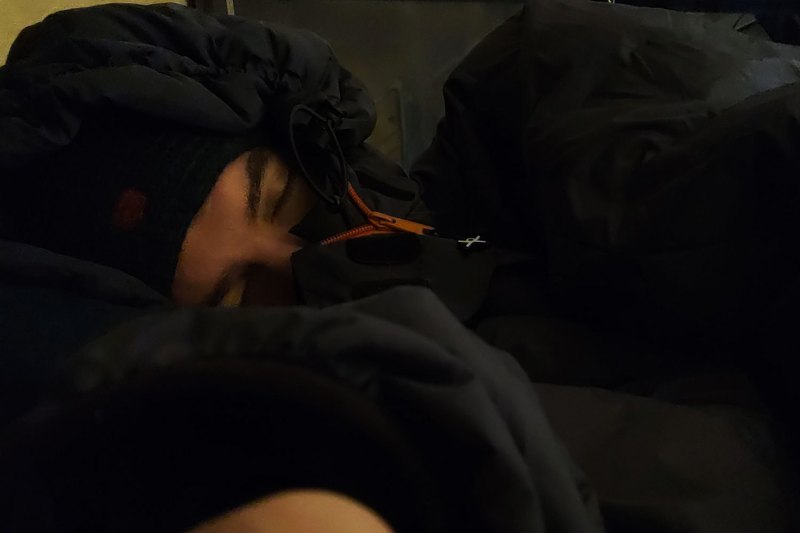
What I Like About the Selk’bag Nomad
Despite its novelty appearance, I found a lot to like about the Selk’bag Nomad, including:
- It feels like a premium product: It’s difficult to get a sense of the quality of anything, especially outdoor gear, from shopping online. But, every part of the Selk’bag Nomad feels high-quality.
- It’s warm: I tested the Selk’bag Nomad indoors and outdoors at its rated 35°F temperature limit and found it very comfortable. Although the shell and lining are made of recycled polyester, it breathes surprisingly well without any overheating or feeling of clamminess.
- It’s soft: It looks soft, and it is soft — very soft. Sleeping with each of my limbs wrapped in sleeping bag material felt like sleeping inside a fluffy cloud.
- YKK Natulon zippers: The YKK zippers are chunky, easy to grab, and glide smoothly with zero snagging.
- Generously sized stuff sack: The stuff sack compresses down very small. But, it’s roomy enough to cram the Selk’bag back inside without remembering some complicated origami-style folding pattern to get it to fit.
- It’s recycled: The best outdoor brands are making great strides with more eco-friendly designs. Still, it’s a pleasant surprise to see a company making an entire product from post-consumer recycled materials.
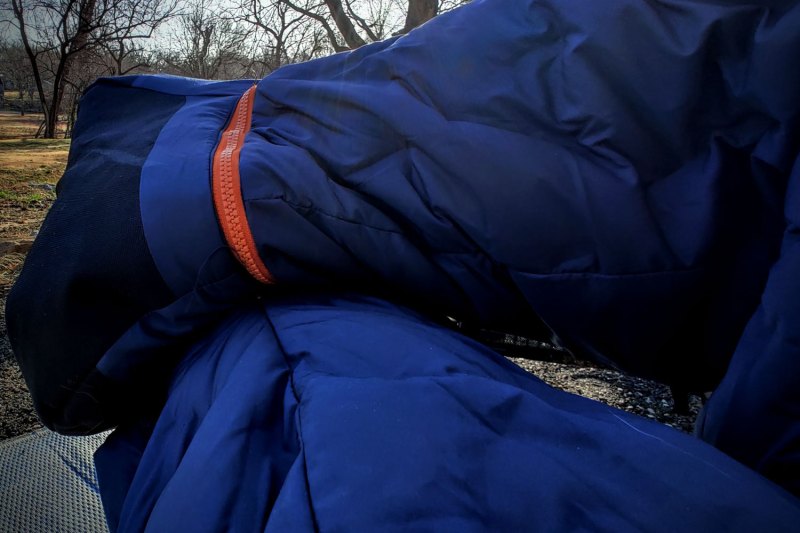
What I Don’t Like About the Selk’bag Nomad
- It bunches: A major selling point of a wearable sleeping bag is being “cocooned” in tons of soft fabric. But, that fabric can get in the way of ordinary campsite tasks like cooking or building a fire. This wasn’t a deal-breaker for me, but I had to be more conscious of my movements, so I wasn’t knocking things over or getting caught on my camp chair.
- Fidgety sleepers beware: For anyone who falls asleep and wakes up in the same position, this probably won’t be an issue. For me, I often toss in my sleep from my back to my side and back again. All that spinning in place isn’t a problem in a traditional sleeping bag. But, I found myself having to make minor adjustments with the Selk’bag every time I repositioned. Bits of fabric, especially the hood, would bunch up just enough to make me “reseat” myself inside the bag.
- No crotch zipper: I would love the addition of a zipper in front of the crotch for midnight bathroom runs. As it stands, restroom “visits” require unzipping and folding the Selk’bag Nomad down from the shoulder to below the waist for a quick pee. That kind of defeats the purpose of a wearable sleeping bag that shouldn’t need to be taken off.
- Curious sizing: At 5’6” with a medium build, I wear a Medium in most tops and bottoms. But, according to the Selk’bag website, I’m a Large (“If you are between 5’3” and 5’9”, this is your size.”). After a week of testing, I can’t help but wonder if some of my issues were because the sizing is a bit off. If you’re considering a Selk’bag of your own, I’d suggest contacting the brand first to confirm your proper size.
FAQs for the Selk’bag Nomad
All of Selk’bag’s wearable sleeping bags, including the Selk’bag Nomad, are simple outdoor products. Still, some of the questions and concerns I’ve seen most from owners and prospective buyers include:
Is there such a thing as a sleeping bag suit?
That Selk’bag exists is a clear answer that, yes, there is such a thing as a sleeping bag suit. In my experience, the alternatives on the market are of cheaper quality and not as versatile as the Selk’bag Nomad. Most are shaped like ordinary sleeping bags but with arm and/or foot holes for a little extra versatility.
How much is a sleeping bag suit?
Most of the competitor sleeping bag suits and wearable sleeping bags can be found for well under $100. But, it’s clear that “you get what you pay for” as most are off-brand and clearly of poor to average quality compared to Selk’bag. The Selk’bag Nomad might seem pricey at more than $250, but this is clearly a premium product.
How do you pee in a sleeping bag suit?
Some sleeping bag suits have built-in zippers at the front, which is helpful for men needing a late-night bathroom run. I have yet to see a sleeping bag suit with a rear flap, however. Sadly, I think women are out of luck in that department.
When was the first walking sleeping bag invented?
Official records are scarce, but Ajungilak (predecessor to today’s Mammut brand) allegedly debuted the Gubbe in 1936. It was the world’s first sleeping bag with arms and legs.
Should You Buy the Selk’bag Nomad?
The novelty of the Selk’bag Nomad is what piqued my curiosity. I wasn’t expecting to like it as much as I do. It’s warm, soft, versatile, cleverly designed, and every component, from the shell to the zippers, feels like a premium product. I might stick with a traditional sleeping bag when sleeping while





